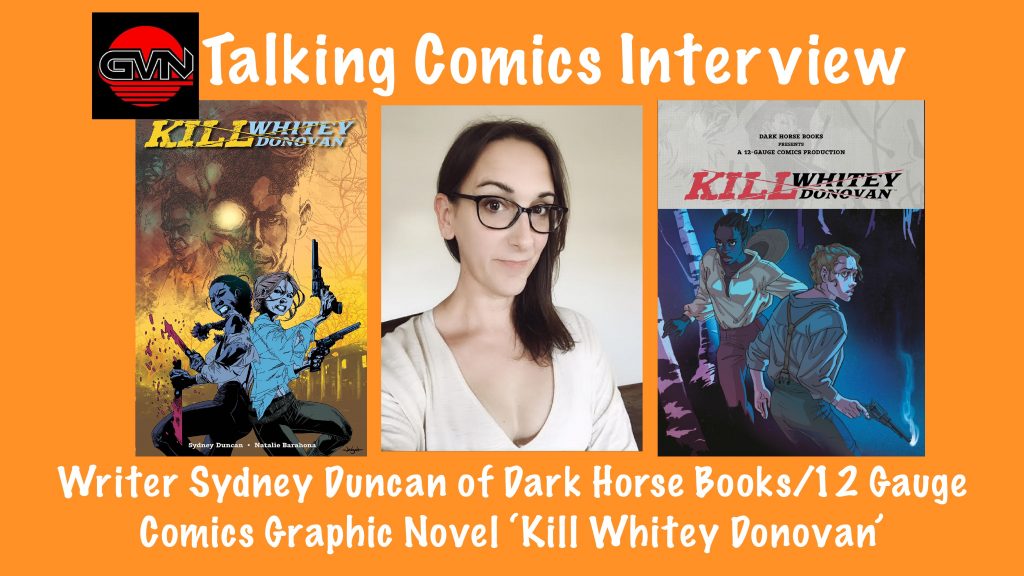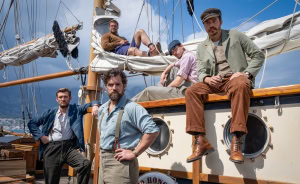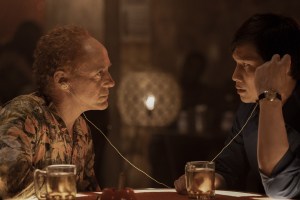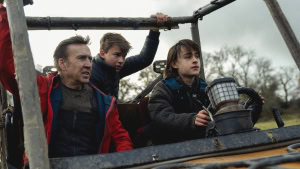Meet Sydney Duncan
GVN: Thank you so much for sharing some time with us Sydney. First off, I have to say your book “Kill Whitey Donovan” is a powerful story and the dialogue is both immersive and at times, disturbing in its authenticity. But more on that in a moment. So as a means of introduction, tell us a little bit about yourself. How did you get started in writing and who were the authors that inspired you at the time?
SD: Thanks for the kind words about Kill Whitey Donovan! So, I’m Sydney Duncan. I write comics, tv and film, and I have a YA trilogy out in the world, beginning with The Revelation of Gabriel Adam. I also practice law in Alabama and I live in Birmingham with my wife, two kids, and a cat.
Comic Inspirations
I’ve been reading comics so long that it’s hard to say which writers didn’t inspire me. But I grew up on Claremont’s X-Men and had a mail delivery subscription. Miller, Moore. Later, Kelly Sue DeConnick, Matt Fraction, Greg Pak, and Mark Waid. I could go on and on. Walt Simonson was a constant. Havoc & Wolverine: Meltdown is one of my favorite things ever. Really got into Dark Horse’s Star Wars and Aliens stuff in college, some Image books which were just coming out, and then kinda dropped in every so often to get that little rush of geekdom that my soul needed.
My origin story starts in the world of prose writing. I had a few novels out when I got the opportunity to pitch Keven Gardner at 12 Gauge Comics over a couple of beers. When you’re a nice guy in comics you know everyone and Keven knows everyone. So he called Brian Stelfreeze and got the train rolling and then suddenly I’m checking Write a Comic Book off a bucket list.
Balancing Law and Writing
GVN: In addition to your writing, I have read (and you just verified) that you are a Pro Bono lawyer with an emphasis on transgender youth in underprivileged communities. This is an impressive endeavor all its own. How do you balance those responsibilities with your writing?
SD: You know, balance is one of those things I constantly work on in my life. Between my two careers and my family, it takes effort to keep those worlds separate, which I feel I need to do for my own mental health. Maybe for theirs, too. The work I do in underprivileged communities, and especially those for people of a trans experience, has unfortunately taken on an urgency lately. There’s been a concerted effort to undermine trans existence with some pretty horrifying state legislation being offered by some extremist special interests.
It’s been hard. Mostly, these laws target youth, so there’s an emotional weight with every kid I take for a client, who just doesn’t understand why the world views them with such hatred and ignorance – just a complete lack of curiosity to understand them. You just want to hug them and tell them it’s going to be okay. In a lot of ways, my creative outlet has been my respite. Like, I’m more tired than I’ve ever been, but at the same time, I think I’m writing the best I’ve ever written. Or maybe it’s all dreck and I just need the creative outlet more than I’ve ever needed it before, so the writing feels good. Either way, the balance has kind of naturally taken care of itself.
Researching Her Subject
GVN: That is so impressive and you have much to be proud of in your work. So let’s get back to your other job and your extraordinary graphic Novel Kill Whitey Donovan. What inspired you to choose this subject and did you research the time period going in?
SD: It’s hard to say what inspired me to write this, because I’m one of those writers that just internalizes everything happening around them and then gets thunderstruck by an idea. I think you can look at ‘Kill Whitey Donovan’ and see a lot of the world around us reflected back. At the same time, my brain is always thinking on identity and how it relates to society and its difference systems. Not sure if that’s a cause or effect of being a woman of trans experience, but it’s through that lens that most of my stories are told.
The Civil War, which in a lot of ways was a war for national identity, seemed like a perfect backdrop and too tempting a setting for me as a Southerner. I wanted to write it as truthfully as I could and though I’m not much more than an armchair historian, we did a college course’s worth of research. At one point, I was looking at farmer’s almanacs for weather reports. We took some liberties, but we wanted an honest story, especially given that some of what we were talking about was hard to read and see.
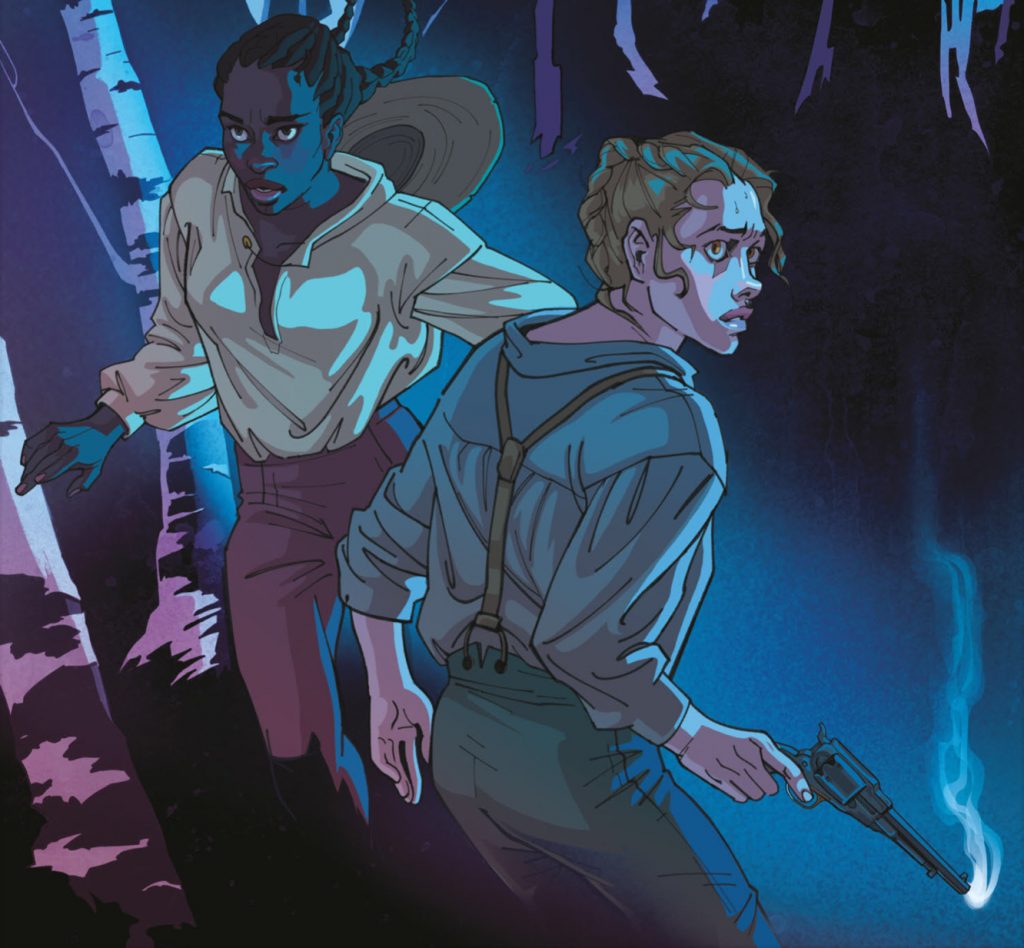
Bringing Hattie and Anna to Life
GVN: The dialogue and scenes in this story are at times gut-wrenching and always ring with authenticity. Especially when Hattie basically “dumbs down” her speech patterns when dealing with certain characters. It displays her intelligence in knowing when it is prudent to do so. Speaking of Hattie and her traveling partner Anna, these are the two powerful female leads from such divergent backgrounds. Did you base these great characters on anyone in particular?
SD: Thank you for that! These characters were pulled out of thin air, but they represent experiences, or a spectrum of experiences, that was pretty common for their time and circumstance. Survival instincts and techniques like Hattie’s are fairly well documented in my research. I think it’s common – even today – for oppressed peoples, in certain scenarios, to strategize their survival. Which is horrifying in its necessity.
Though techniques are different depending on who is the oppressed, the commonality seems to be about conforming, in the moment, to an oppressor’s expectations and becoming, to a degree, invisible. I feel gross even writing that. But when survival is on the line, we adapt. For instance, there are places here in Alabama in which it is not safe for me to look trans to any degree. So I conform, only in those spaces and only to the degree that I need to be in them. Hattie would know at her age who and what was dangerous to her wellbeing. She’d have lived experiences and strategies that would inform how to deal with those circumstances.
Working with Artist Natalie Barahona
GVN: You worked with Artist Natalie Barahona on your graphic novel. Did you and her collaborate during the process or did she work independently by script? What were your thoughts upon seeing some of her work on the story?
SD: Listen, I count seeing my silly ideas about feminist revenge realized in comic book art form for the first time by Natalie as one of the coolest experiences of my life. I’m still not over it. She’s such an amazing talent and if this book is the extent of my comic career, then I’ll end it happily knowing that I got to write Natalie Barahona’s first comic book. I think she’s going to be big. We had a great working relationship, but really she earned her independence with her first delivery of art. And her colors? We were all just blown away. She just has a real knack with visual storytelling and I figured out early on that the story was better served by just staying out of her way.
This slideshow requires JavaScript.
What fans can get from ‘Kill Whitey Donovan’
GVN: When all is said and done, what would you hope that readers, especially younger readers, learn from Kill Whitey Donovan and the time frame which it is set?
SD: Well, I hope they enjoy the read first and foremost. We wanted to deliver something fun and exciting in our little revenge tale, and I hope we’ve done that. For those younger readers, my hope is they’ll find some inspiration in Hattie and Anna’s journey. We live in a world that at every chance tries to box us into a definition that is convenient for it to understand. We’re often more complicated than the world’s stereotypes and expectations and, like our Hattie and Anna, we are empowered – if we choose – to define ourselves. If that’s the take away for a kid or two, then we’ve done our job.
What’s on the Horizon
GVN: Now that you have written your first Graphic Novel, do you have any other ideas that you might like to explore in this medium?
SD: I love comics and have for a long time. So it’s a thrill to be able to write in this medium. And comics people are just the best, right? I have a few pitches I’m working on and I have a short that I did with J. P. Mavinga and Tom Napolitano in Humanoids’ First Degree: A Crime Anthology, due out in August. Mavinga’s artwork is gorgeous, so you’ll want to check that out. Tom’s letters are on point, as always. Rob Levin and Mark Waid put together a great team on that and I’m pretty excited to be a part of it.
GVN: Thank you so much Sydney and we will be following Kill Whitey Donovan with great interest.
This book by Dark Horse Books in conjunction with 12 Gauge Comics just came out in TPB format and is seriously worth the read. Intense drama with a cinema style deal to it. No wonder it’s already in the planning stages of being adapted for a film by Hideaway Pictures. Check it out where great books are sold.
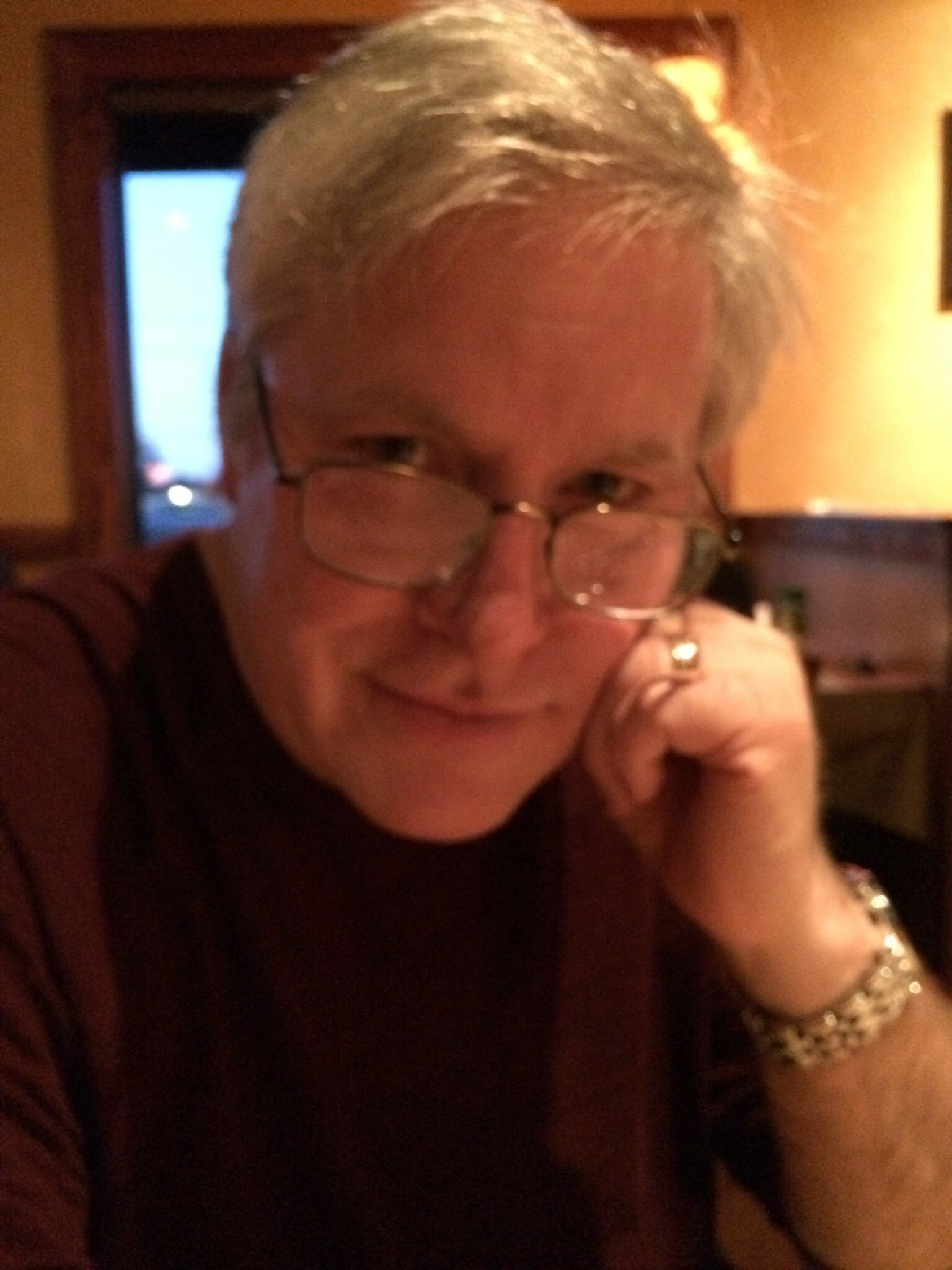
Senior Writer at GeekVibesNation – I am a 50 something child of the 70’s who admits to being a Star Trek/Star Wars/Comic Book junkie who once dove head first over a cliff (Ok, it was a small hill) to try to rescue his Fantastic Four comic from a watery grave. I am married to a lovely woman who is as crazy as I am and the proud parent of a 18 year old boy with autism. My wife and son are my real heroes.


